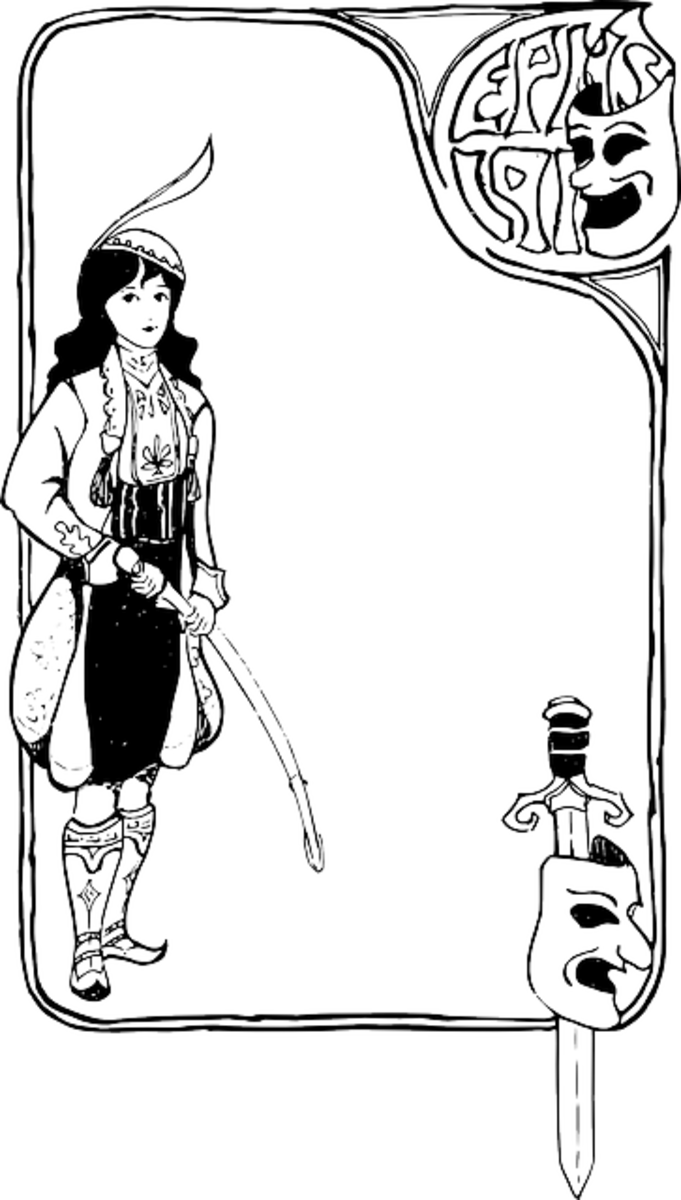A Focus on Catharsis
Introduction and Background
A catharsis is derived from a Greek word with the meaning of releasing or purification. The concept emphasizes two essential components, which are strong emotional expression and the act of processing it, alongside the new realization, insight, and changes in consciousness which subsequently result in positive change. catharsis is also defined as the process of reducing a complex by recalling to conscious awareness and giving it room for expression. Catharsis is also considered as the discharge of the effect of recalling things that had previously brought these events back to consciousness.
The concept of catharsis has been betrayed in literature, theater, religion, cultural rituals, psychological and on medical contexts. Though catharsis takes different shapes, it nonetheless remains the same eventually. It can also be analyzed as a release from some form of burden either physically or mentally, and therefore, leading to healing through its cleansing effect.
Catharsis is both medical and physiological sensuous. It is emotional cleansing that is experienced by spectators during the act of watching tragedy or a drama which lead to a healing effect of the person involved. Aristotle go on to point out that cathartic influence of music on people leads to a certain purge and pleasant relief. Therefore, catharsis harbours both moral and ethical implications. It is believed that catharsis helped to moderate, strong emotion and passion. In addition, sharing, with pleasures and reliving aspects. This enable someone to experience a relief of disturbing emotions such as pity, fear and also its emotional discharge which are created by the body when one watches or encounters a tragedy.
The use of Catharsis in Literature and Theatre
In order to provoke emotional expression of readers and spectators, different techniques have to be used. This can be done through expressing surprise and unexpectedness which can be used as the key factor to portray catharsis. For example in the Greek tragedy “ Oedipus Rex” catharsis occurred at the end when King Oedipus was taken by the impermissibility of innocent and emptiness caused by the act of losing his mother, which made him blind. Catharsis can also have other different meaning that is more extensive. For example, Bertold Brecht, the great German considered it as a tool for greater social change. Brecht proved the a feeling of emptiness, build tension and lead the audience to catharsis by use of absence of consistent action which made the audience to undertake the social and political actions for them to escape from the emotional feeling of emptiness inside.
Humans seeks to enjoy those activities that help them to relieve their painful experiences which may have affected them in one way or another. Therefore, achieving a resolution for their experiences. For example, crying about over someone is nothing more than a rewarding feeling of loss in the relieving of unfinished personal experience. In addition, when personal distress is reawakened in the appropriate social environment such as an overwhelming emotional experience generated by theater, people who are in such a situation find that they are not being themselves by they are playing a character presented by the figures in that literature and theatre which provides a safe distance from people owning experience.
Catharsis in Medicine, Religion and Cultural rituals
In medicine, the idea of catharsis is similar to that in literature, although the medical sense implies a physical release, it still means the act of purifying. For example, , the expectoration of the sputa implies healing of cold. This was not until Hippocrates suggested that such as acts of vomiting, diarrhea, and menstruation were regarded as a catharsis process.
As a result of its role of purification, Hippocrates associates catharsis with healing. Observing this in a spitual perspective, it becomes the same that is discharging the harmfulaspects from the mind to make one clean. In ritual indication the one that has been in the engagement of some ritual prohibition or sin, catharsis is used to restore the body to the previous status before the violation of the norms and rules in the status quo. In some religious practices purification is done with the help of water, fire, blood, change of clothes and scarifies. In other parts rituals are often considered as part of removing guilty effect from someone hence considered as an act of healing.
Furthermore, the ritual of Christian baptism is the key mission of mysticism to understand the return of someone’s soul with God which has the catharsis meaning of Christianity. The concept of cathartic treatment applies to Christian baptism because confession involves the recall, release and revealing of forbidden thought, expression and action.
Throughout history, spiritual and cultural rituals have been known in the act of helping people process collective stress situations, such as death, or separation, changing events like rites of passages and wedding. In traditional societies there were inherent ceremonies, activities like funeral rites, curing rituals, weeping, drumming or ecstatic dance.
Modern forms of mass entertainment can as well provoke massive cathartic. For example, attracting mass audiences has become a socially acceptable way for collective crying. Another one is that based on popularity of horror movies which works by intensively evoking emotions. The experience and discharge of social, cultural, spiritual or athletic events which highly popular attraction of massive audience, therefore, its a collective form of emotion known to provide relief and in case of group cohesiveness and solidarity.
The ideas of catharsis were popular in scientific circles in Germany as per research made in the 1890s. Accordingly, there were numerous articles published on the subject on the cathartic therapy according to the therapeutic method in psychology. They used hypnosis to recover repressed memories of negative traumatic events. The theory by Breurer and Freud commends that symptoms of emotions are caused by repressed emotion which is recognized by the observation that each individual expresses hysterical symptoms immediately and permanently. The rejections of hypnotic and cathartic component of therapy led to a refocus on the insight aspect and development of psychoanalysis.
The Hydraulic Model of Emotions and Venting Theory
The greater the expression of negative, the greater the relief should be, this is indicated by the hydraulic model of emotion that uses the analogy of the fluent flowing through a system. In addition, the theory postulates that emotional distress if not expressed when stored creates intensified pressure within the system. Owing to this, emotions should decrease tension and negative psychological experience
Emotional expression is a natural phenomena in humans and should not be taken as a cultural phenomenon since it is a body reaction. He also said that some emotional expressions like crying is necessarily biological. Since after birth the child is unmodified with the emotion of cry. So what people should engage in is researching on the act of crying, but not the emotional aspect of cry.
Catharsis-Based Treatment Approaches
In the catharsis treatment professional psychology field, many contemporary modalities consider significant approach curative aspects on catharsis. Therefore, psychodrama, primal therapy and therapy focusing of emotion will be considered.
The Use of Catharsis in Psychodrama
The role of catharsis as a beneficial psychological technique was underestimated. He used the concept that was employed by Aristotle and Freud on catharsis, and therefore, developed these concepts to psychotherapeutic modality. Has then proven that Reenacting scenes from one’s past fantasies or dream helps the client change unconscious conflict to consciousness, which eventually can help anyone to achieve positive change.
The Use of Catharsis in Primal Therapy
Janov (2007) elaborated the theory that was claimed and expanded by Freud on children’s experiences. His studies proved that if infants, children are not able to process painful experience that is crying, scream, sob or wail, they could as well be described as dead owing to lack of emotional symptoms.
Use of Catharsis in Emotion-Focused Therapy
There is need of understanding and making sense of emotion. The major reason for these assumptions is that the arousal and processing within a supportive therapeutic relationship is a core element of positive change in therapy. The author goes on to argue that the appearance of emotion focusing on therapy appropriately addressed the cognitive components of catharsis and safety issues since awareness, healthy emotional expression and cognitive integration of emotions are combined in the production of positive change
Controversy About the Effectiveness of Catharsis in Psychotherapy
Current research present contradiction about the assumption that catharsis has been perceived negatively. This is because the evaluated impacts from Nichols (1974) presents catharsis on the positive outcome of brief psychotherapy and validated the hypothesis that catharsis leads to therapeutic improvement, target personal satisfactory and complaints.
Processing emotions in therapy are a significant step towards positive change. Clients with major expression have a better outcome regardless of the higher level of emotional views. Therefore, the traditional views about the value of catharsis is being challenged as per the research.
Anger should not be used in therapy. This is because ‘venting anger does not help in reducing anger. Traumatic experiences can be relearned and become harmful if they are relived repeatedly in catharsis. Catharsis based on therapeutic techniques is claimed to be effective. This according to him is because the demonstration that expression of anger does not produce the relief or anger reduction, and this is brought about by the conclusion about the ineffectiveness of venting anger which is generalizing all cathartic experience.
The question about how reasonable it is in generalization and how research is done on the effectiveness of venting anger can be applied to cathartic technique in general brings back the definition of the word ‘catharsis’ as both cognitive and emotional experiences.The extremely important point of effectiveness of catharsis in therapy strongly depends on balancing the past distress and feeling safety and support in the present. In other words, one should achieve optimum distance by becoming both a participant and observer. In addition the repeated somatic- emotional discharge of grief, fear and anger with appropriate distancing and support is a necessary component since in case of major repressed traumatic event verbal recall alone is not sufficient for permanent positive therapeutic change.
The effectiveness of psychotherapy in catharsis should not be confused with isolated emotion discharge technique. This is because catharsis is an experience (fully or partially) of traumatic events’ which is inadequately emotionally processed and are repressed. Therefore, catharsis has a potential of causing physical, emotional or relationship problems with the life of someone. More studies are needed to determine the effect of cathartic techniques by combining the context, comparing and showing the relationship of the result of different people and make findings on the same issue.
Conclusion
To summarize, it is well expressed that catharsis is considered to have strong healing effects on medical religion, cultural healing ritual, literature and drama throughout the history. Starting with Breuer and Freud, the concepts of catharsis has been widely used in psychology. In addition, modern therapeutic modalities emphasize on the value of expression of repressed emotions and catharsis is used as an essential tool for positive change in therapeutic aspects. In other situations, supporters of cognitive – behavior approaches dominates the field of psychology. Therefore, most of contemporary schools underestimate the importance of catharsis by observing mostly in the effects regulations, while ignoring the impact released by the emotion.
Generally, the evidence released scientifically on how catharsis results in positive therapeutic change are controversial. Leads to occurrence of confusion, for lack of careful definition and agreement concerning what constitutes catharsis are still issues to recog. Nonetheless, there is more need to understand the catharsis considering its essentially in the life of an individual.








